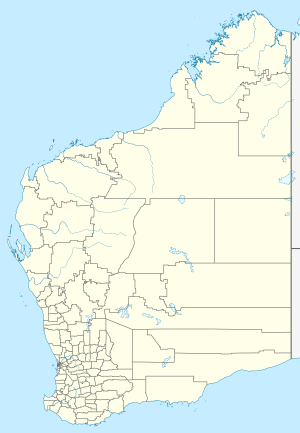Carronade Island facts for kids
Carronade Island is a small island located off the northern coast of Western Australia, in a place called Napier Broome Bay. You can find it in the Kimberley region (13°56′42″S 126°36′09″E / 13.94500°S 126.60250°E). The island got its name because two old cannons were found there in 1916. People at first thought they were a type of cannon called "carronades," but they were actually different.
Contents
What Makes Carronade Island Special?
Carronade Island is famous for the mystery of the two old cannons found there. These cannons led to a lot of interesting ideas about who might have visited Australia long ago.
The Discovery of the Cannons
In July 1916, a ship from the Royal Australian Navy, called HMAS Encounter, sailed into Napier Broome Bay. A group of sailors from the ship explored a small island in the bay. There, they found two bronze cannons sticking out of the ground. They were about six feet apart.
What Kind of Cannons Were They?
The two bronze cannons were both about one meter long. They looked a bit different from each other in their design and size. The sailors carefully took them to the Garden Island Naval dockyard.
Early Ideas About the Cannons
When the cannons were first found, people had many ideas about where they came from. Some thought they were "part of the weapons from a Spanish or Portuguese caravel." A caravel was a type of small, fast sailing ship used in the 15th to 17th centuries.
The Portuguese Discovery Theory
Later, in 1977, a writer named Kenneth McIntyre suggested that these cannons were proof that Portuguese explorers had discovered Australia before other Europeans. He called the cannons "the most real link" to the first European discovery of Australia. This idea is part of the theory of Portuguese discovery of Australia.
The Real Story: Swivel Guns from Southeast Asia
To find out the truth, an expert named Jeremy Green from the Western Australian Museum studied the cannons very carefully.
How Experts Solved the Mystery
Jeremy Green's detailed report showed that both weapons were actually "swivel guns." Swivel guns are small cannons that can turn easily, often used on ships or small forts. He used special tests, like X-rays and chemical analysis, to learn more about the metal.
His research showed that the guns were made in Southeast Asia in the late 1700s. This means they likely arrived in Australia through contact with Makassan traders. These traders from Indonesia visited northern Australia for hundreds of years. The idea that one of the guns had a Portuguese "rose and crown" symbol was found to be incorrect.


